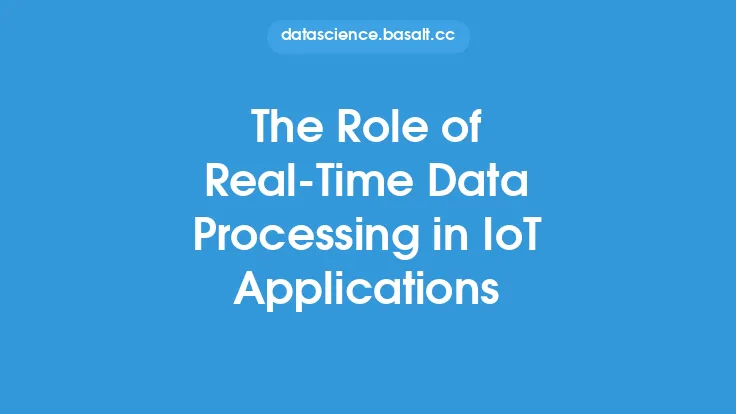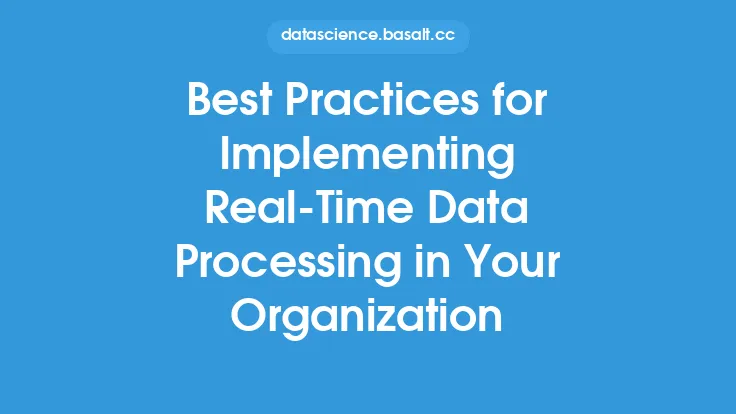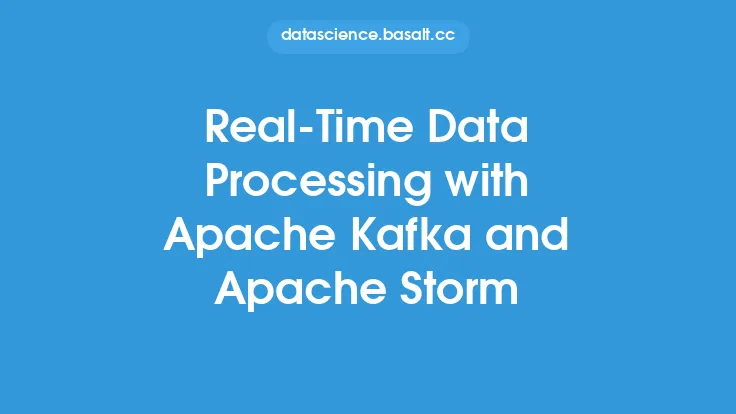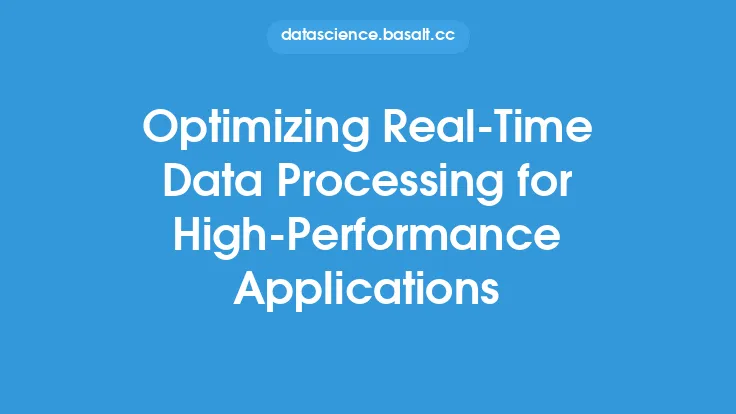In today's fast-paced, data-driven world, the ability to process and analyze large volumes of data in real-time is crucial for many applications, including financial trading, healthcare, and transportation systems. At the heart of these real-time systems is the need for low-latency data processing, which enables organizations to respond quickly to changing conditions and make informed decisions. In this article, we will delve into the importance of low-latency data processing in real-time systems, exploring its benefits, challenges, and key considerations for implementation.
What is Low-Latency Data Processing?
Low-latency data processing refers to the ability of a system to process and analyze data in real-time, with minimal delay or latency. This is particularly important in applications where timely decision-making is critical, such as in financial trading, where milliseconds can mean the difference between profit and loss. Low-latency data processing involves the use of specialized hardware and software architectures that are designed to minimize latency and maximize throughput.
Benefits of Low-Latency Data Processing
The benefits of low-latency data processing are numerous and significant. Some of the most important advantages include:
- Improved decision-making: By processing data in real-time, organizations can respond quickly to changing conditions and make informed decisions.
- Increased competitiveness: In many industries, the ability to process data quickly and respond to changing conditions can be a key differentiator, enabling organizations to stay ahead of the competition.
- Enhanced customer experience: Low-latency data processing can enable organizations to provide faster and more responsive services, improving the overall customer experience.
- Reduced risk: In applications such as financial trading, low-latency data processing can help reduce risk by enabling organizations to respond quickly to changing market conditions.
Challenges of Low-Latency Data Processing
While low-latency data processing offers many benefits, it also presents several challenges. Some of the most significant challenges include:
- Scalability: As data volumes increase, low-latency data processing systems must be able to scale to handle the increased load, without sacrificing performance.
- Complexity: Low-latency data processing systems often require complex architectures and specialized hardware, which can be difficult to design and implement.
- Cost: The hardware and software required for low-latency data processing can be expensive, making it a significant investment for many organizations.
- Data quality: Low-latency data processing systems require high-quality data to function effectively, which can be a challenge in applications where data is noisy or incomplete.
Key Considerations for Implementation
When implementing low-latency data processing systems, there are several key considerations to keep in mind. Some of the most important considerations include:
- Hardware selection: The choice of hardware is critical in low-latency data processing systems, with options including specialized processors, graphics processing units (GPUs), and field-programmable gate arrays (FPGAs).
- Software architecture: The software architecture of the system must be designed to minimize latency and maximize throughput, with options including event-driven architectures and streaming data processing frameworks.
- Data ingestion: The system must be able to ingest data quickly and efficiently, with options including message queues, streaming data platforms, and data ingestion frameworks.
- Data processing: The system must be able to process data quickly and efficiently, with options including in-memory computing, parallel processing, and distributed computing.
Technologies for Low-Latency Data Processing
There are several technologies that can be used to implement low-latency data processing systems, including:
- In-memory data grids: In-memory data grids, such as Apache Ignite and Hazelcast, provide a scalable and high-performance platform for low-latency data processing.
- Streaming data processing frameworks: Streaming data processing frameworks, such as Apache Kafka and Apache Flink, provide a scalable and fault-tolerant platform for low-latency data processing.
- Specialized processors: Specialized processors, such as GPUs and FPGAs, provide a high-performance platform for low-latency data processing.
- Cloud-based services: Cloud-based services, such as Amazon Kinesis and Google Cloud Pub/Sub, provide a scalable and on-demand platform for low-latency data processing.
Best Practices for Low-Latency Data Processing
When implementing low-latency data processing systems, there are several best practices to keep in mind. Some of the most important best practices include:
- Monitor and optimize performance: The system must be monitored and optimized regularly to ensure that it is operating at peak performance.
- Use scalable architectures: The system must be designed to scale horizontally and vertically, to handle increased data volumes and velocities.
- Use high-performance hardware: The system must be built using high-performance hardware, such as specialized processors and high-speed storage.
- Use efficient data processing algorithms: The system must use efficient data processing algorithms, such as parallel processing and distributed computing, to minimize latency and maximize throughput.
Conclusion
Low-latency data processing is a critical component of many real-time systems, enabling organizations to respond quickly to changing conditions and make informed decisions. While it presents several challenges, including scalability, complexity, and cost, the benefits of low-latency data processing make it a worthwhile investment for many organizations. By understanding the key considerations for implementation, technologies, and best practices for low-latency data processing, organizations can build high-performance systems that meet their needs and provide a competitive advantage.





